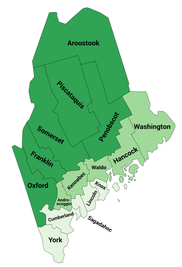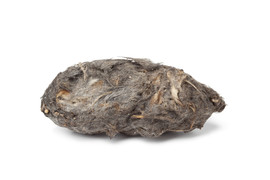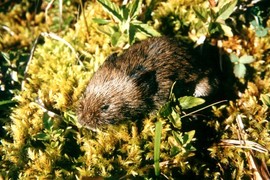|
Introducing the Maine Owl Pellet Project
 The next time you go for a walk in the woods, lookout for owl pellets! You may be wondering, what is an owl pellet?!?
Owls eat a variety of animals and then regurgitate course matter (like hair, bones, and feathers) in the form of pellets. These pellets can be found on the ground, often near an owl roost. Owl roosts are places where these secretive predators return regularly to rest or sleep.
We will use owl pellets to learn more about 1) the diet of owls, and 2) owl prey because the pellets contain prey parts we can identify. By identifying prey parts, we hope to discover new locations where the rare northern bog lemming is found in Maine to inform conservation efforts.?But, the Maine Owl Pellet Project needs your help to connect us with pellets!
?

How you can help
If you live, work, or adventure in Maine and find an owl pellet, please consider collecting and sending?the pellet to us for analysis. Directions can be found here:?Find, collect, and send pellets!
?
Pellets from northern Maine counties (dark green) are of greatest interest, based on potential northern bog lemming distribution, though we welcome submissions from across the state (lighter greens).
|
|
|

Owl pellets are usually brownish/grayish, oblong lumps that vary in size from about 1?3? long.?Because they are composed primarily of indigestible prey remains, their appearance varies based on the owl?s last meal. Owls eat a lot of rodents, so many owl pellets look like a lump of hair and bones. Owl pellets can also include feathers, pieces of insects or crayfish exoskeleton, and other prey items, and may also contain sand or pebbles from the gizzard. Check out our?image gallery?to see examples!
|
 Photo by Dean Pearson
Very little is known about the elusive, state threatened Northern bog lemming, a relative of mice and voles.?Optimum habitat seems to be remote, wet, mossy, high elevation areas. Fecal pellet surveys have led to a handful of documented occurrences including two sites in Baxter State Park, but other traditional survey methods have been largely inefficient or ineffective in detecting northern bog lemmings in Maine. So, we?re getting creative? will citizen science come to the rescue?
|
|
|
|
